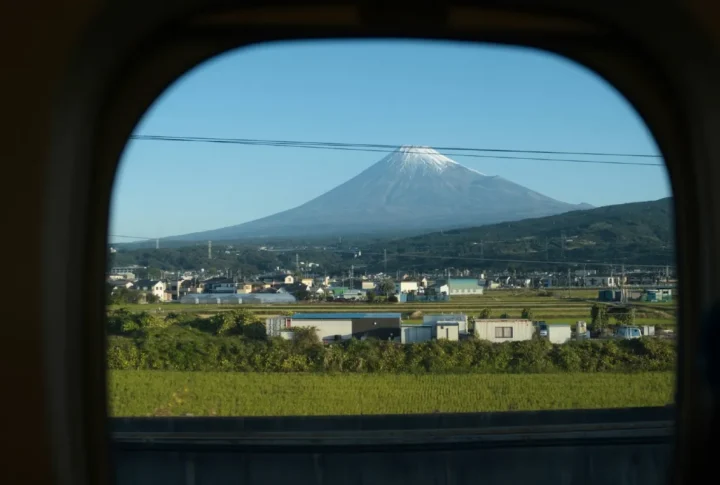Exploring Urban Landscapes: Train Travels Between Major Japanese and Korean Cities
There’s something undeniably thrilling about travelling between major cities by train—watching skylines give way to countryside and feeling the pulse of a country without ever leaving the ground. Nowhere does this better than Japan and South Korea.
These two nations, steeped in tradition yet wired for the future, offer travellers the perfect blend of efficiency and cultural depth. And when you pair the speed of modern rail with the charm of each city’s personality, you get an unforgettable journey through some of East Asia’s most fascinating landscapes.
Whether it’s navigating neon-lit streets in Tokyo or tucking into street food in Busan, hopping from city to city by train is a rewarding and smooth experience. Let’s take a closer look at how these rail routes unlock the very best of Japan and South Korea.

The Japanese Rail Experience: More Than Just Transit
Japan’s railway system stands as a shining example of technological precision and transport innovation. It’s not just about getting from point A to point B—it’s about doing so in style, speed, and silence. The Shinkansen, or bullet train, has long been the gold standard for high-speed travel. Smooth as silk and impossibly punctual, it offers not only convenience but a glimpse into the country’s love for detail and efficiency.
If you’re planning to explore central Japan, one of the most popular routes is the journey between the capital and its former imperial heart: Tokyo to Kyoto train tickets are easy to book and open up an experience that feels like a time warp. Tokyo buzzes with energy, with skyscrapers, high-fashion districts, and tech wonderlands. Just a few hours later, Kyoto greets you with quiet temples, bamboo groves, and the lingering elegance of the geisha districts.
And the best part? There’s barely time to crack open a snack before you’ve covered over 450km. The views from the window alone—Mount Fuji on a clear day, endless fields, quaint towns—make the trip worth it.
Slowing Down in Kyoto
Once you arrive in Kyoto, you’ll immediately notice the shift. Here, the pace is gentler, the streets quieter, and the past feels wonderfully present. Visit centuries-old shrines, sip matcha in a traditional tea house, or simply wander the Philosopher’s Path. The contrast to Tokyo isn’t jarring—it’s enriching. Both cities complement each other, one futuristic and fast-paced, the other meditative and deeply historic.
For those eager to explore Japan’s diverse regions, the Shinkansen links Kyoto to other iconic cities like Osaka, Hiroshima, and Kanazawa, all within a few scenic hours.
South Korea by Rail: Compact, Convenient, and Cultural
Over in South Korea, the story is similar—but with its own distinct flavour. South Korea’s KTX system takes the stress out of getting around, offering fast and seamless travel between major cities. Sleek, efficient, and cost-effective, the trains serve as lifelines connecting vibrant urban hubs with coastal cities and cultural heartlands.
If there’s one journey that captures South Korea’s rhythm, it’s the train Seoul to Busan. This route stitches together the modern capital and the laid-back port city in under three hours. Along the way, the train cuts through green hills, past river valleys and industrial sprawl, giving you a crash course in the country’s geography and development.
Seoul: Tradition Wrapped in a Tech Metropolis
South Korea’s capital is often described as a place where the past meets the present—and not in a cliché way. You’ll see ancient palaces nestled between office towers, and monks on mobile phones strolling near high-end boutiques. In Seoul, street food vendors share alleyways with Michelin-starred restaurants, and traditional hanok houses sit beneath LED-lit billboards.
It’s a city where your days might start at a 600-year-old palace and end with a soju-fuelled karaoke session. And thanks to the rail network, you don’t have to choose between urban exploration and day trips to natural or historical sites.
Busan: Sea Breezes and City Streets
At the southern tip of the country, Busan offers a very different vibe. It’s more relaxed, less polished, and feels almost like South Korea’s answer to Los Angeles. The beaches are busy in summer, the seafood is legendary year-round, and the nightlife has an edge that contrasts with Seoul’s sleekness.
Getting from Seoul to Busan by train isn’t just practical—it’s part of the journey. Watch cityscapes fade into farmland, then transform again into coastal terrain. Once you arrive, head to Haeundae Beach, take a hike up to the colourful Gamcheon Culture Village, or unwind in a seaside spa.
Trains: The Joy of the Journey
What makes travelling by train in Japan and South Korea so rewarding isn’t just speed. It’s the seamlessness, the scenery, and the feeling of really moving through a place instead of just flying over it.
You board in the heart of the city and glide through real terrain—past office blocks, neighbourhoods, rice paddies, mountains, and sea. It’s an experience grounded in reality, full of contrasts and little details: vending machines on the platform, impeccable punctuality, the quiet shuffle of bento boxes and books being opened.
Practical Tips for Train Travel
- Buy early, especially for popular routes: Getting your train tickets ahead of time helps secure the best seats and prices.
- Use a rail pass if you’re doing multiple trips: Both countries offer passes for tourists that can save you money, especially over longer distances.
- Be on time: Trains in both Japan and Korea leave exactly when scheduled. Don’t be late.
- Pack light and smart: Storage is limited, especially on high-speed trains. Leave bulky luggage at your accommodation.
- Try the local food onboard: Bento boxes in Japan and snacks in Korean stations are worth exploring.
Final Thoughts: Why Go By Rail?
Cities like Tokyo, Kyoto, Seoul, and Busan are each their own universe. By travelling between them on the ground, you connect the dots more meaningfully. You see how one landscape becomes another, how culture shifts subtly with each passing station.
High-speed rail in Japan and South Korea isn’t just an efficient transport option—it’s a window into daily life, regional identity, and national pride. Whether it’s your first time in East Asia or your fifth, there’s always something new to discover just beyond the next station.
So skip the boring flights, forget the traffic jams, and hop on board. The rails are ready—and the cities are waiting.


